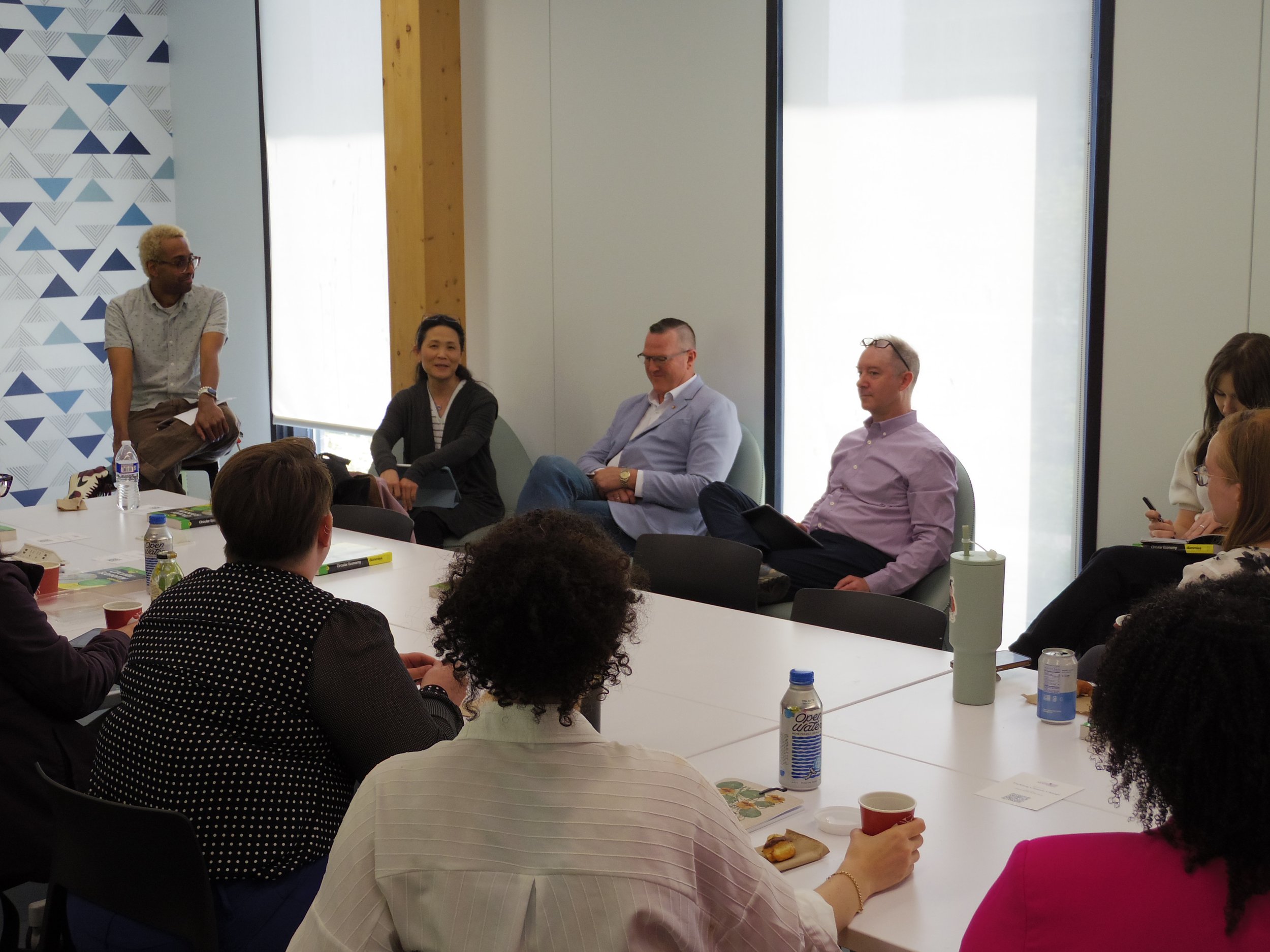S3: Tackling Climate Change
April 18, 2025
Location: Southwest Library
Led by: Alanna Gladney, AIA, NOMA and John Kucia, AIA
Session three of the Christopher Kelley Leadership Development program, titled Tackling Climate Change, outlined architects' role in building community resilience and shaping sustainability policy amidst changing politics. The group heard from a variety of sustainability focused roles from both private and public sectors. The session ended with an impressive building tour of 80M St, the first mass timber construction in Washington, DC.
Act 1: From Heirs to High Ground: Navigating Climate Change Resilience
Dahlia Nduom, AIA, NOMA
Dahlia Nduom, an Associate Professor of Architecture at Howard University, outlined the architect’s role in tackling displacement due to climate change. Climate change is not only a health and wellness issue, but it is also a social justice issue due to the disproportionate effect that climate disasters have on poor people and people of color. The disaster risk placed on a community is a factor that can inform how architects design for resilience. Keeping people in place is the priority, but as evidenced by ‘Carbon Casualty’ stories from the New York Times, sometimes displacement is inevitable. Design thinking coupled with an intersectional approach to design can help communities plan for resilience against both short term disasters and long term environmental changes. As shown by her studio’s Puerto Rico Case Study, Dahlia’s focus on architecture through the lens of climate justice is helping to enhance community resilience in the face of climate change.
Speakers: Lance Davis, FAIA, LEED Fellow, MSU Fellow, Seonhee Kim, AIA, NOMA, LEED AP BD+C, WELL AP, Ecodistrict AP, William LeRoy
Moderator: Dan Reed
Lance Davis, a sustainability architect for the GSA; William LeRoy, an environmental protections specialist at the EPA; and Seonhee Kim, Principal and Director of Sustainability at Design Collective, discuss how architects can maintain focus on sustainability despite changing government policies as moderated by Regional Policy Director of Greater Greater Washington Dan Reed. The discussion began with highlighting the need for a unified and inclusive approach to measuring sustainability. Oftentimes standard metrics for measuring the environmental impacts a project or material has are misleading or exclusive in scope. Especially in the public sector, holding people accountable for reaching the sustainable goals they talk about starts with participation from architects to set standards. Even though current government policies have changed requirements for high-performance buildings, as evidenced by history, progress can only be slowed not stopped. In order to overcome bureaucratic challenges to designing more sustainable buildings, architects should demand better products from the market, while banding together to create focus on better policy. A more precise understanding of building life cycles and construction means and methods can create buildings that are well suited to a circular economy.
Act 2: Green Tape, Red Lines, & Sustainability Policy in Uncertain Times
80M as presented by Hickok Cole Architect Mark Ramirez and Arup Engineer Linda Toth is a unique and thoughtful renovation of an existing office building. A number of elements make this a standout project. Firstly, the project was delivered on time and under budget with the help of Davis Construction and Katerra. Second, the building was fully occupied during this renovation, and the majority of the facade and original structure was left untouched. Last and most notably, the 3 story addition is constructed from mass timber. The choice of mass timber was not only a sustainable one, but an economic one as the price for mass timber construction was the same as steel but without the added carbon emissions. Additionally, PV panels were added to further reduce the carbon footprint of the project. The timber construction is partially exposed throughout the addition and features hidden steel connections. This produces a warm and elegant aesthetic for the office spaces the group toured.












